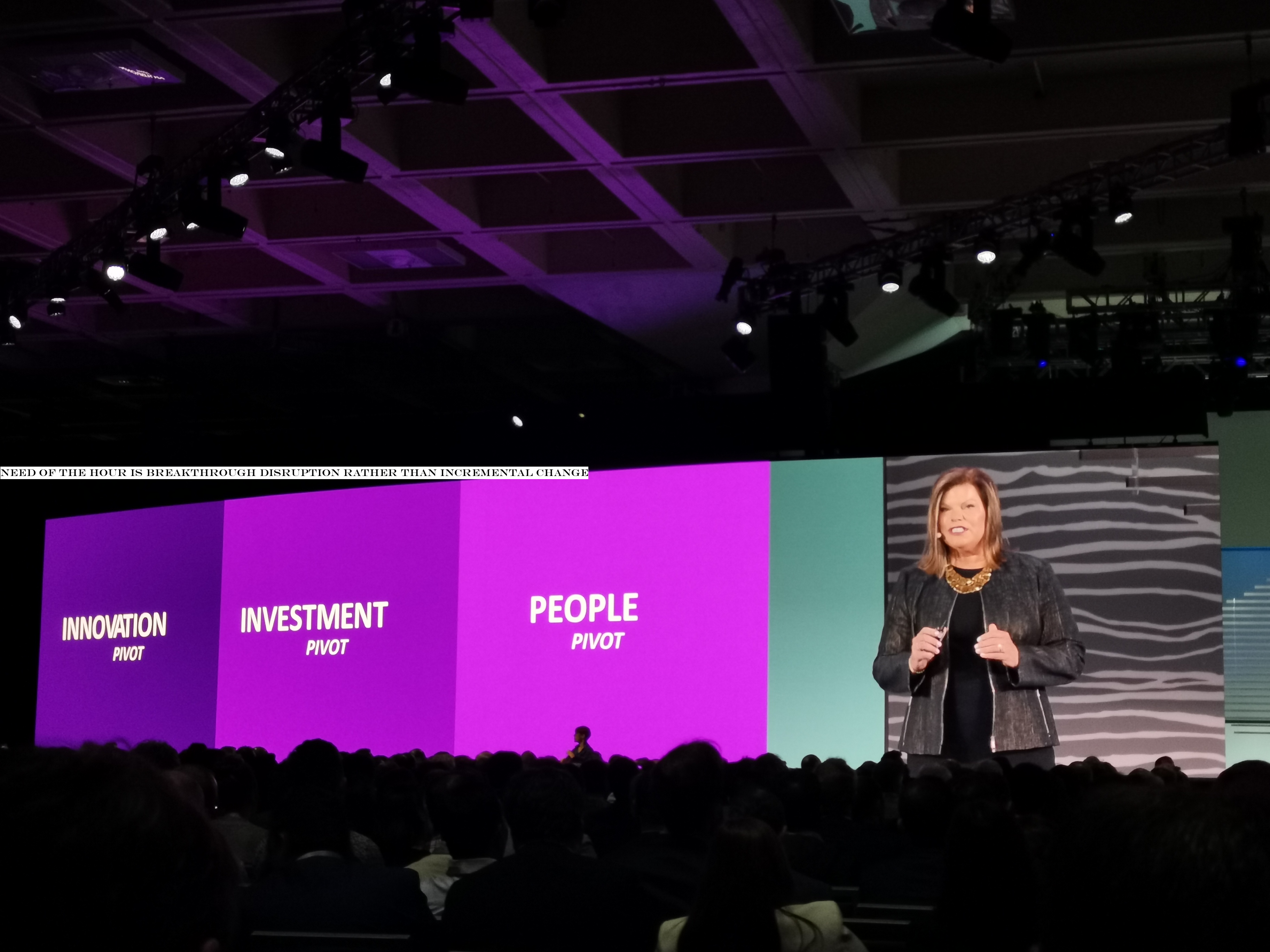Music
Trailers
DailyVideos
India
Pakistan
Afghanistan
Bangladesh
Srilanka
Nepal
Thailand
StockMarket
Business
Technology
Startup
Trending Videos
Coupons
Football
Search
Download App in Playstore
Download App
Best Collections
Technology
AT-T faked the numbers for its DirecTV Now streaming service ahead of the companyTime Warner merger, according to a lawsuit filed by investors, Bloomberg reported. The suit alleges the media giant pressured employees to boost DirecTV Nownumbers by secretly adding the product to existing customers& accounts. It also claims the company touted DirecTV Nowuser growth, when in reality, subscribers were leaving as their promotional periods ended and the serviceprice hikes were limiting new sign-ups.
The suit says a variety of tactics were used to promote the idea that DirecTV Now was growing organically. For example, it claims that employees were taught how and encouraged to convert activation fees that customers typically had to pay to upgrade their phones into DirecTV Now subscriptions. This involved the customer being told the fee was being &waived,& when instead the customer was charged anyway and the payment was applied to up to 3 DirecTV Now accounts using fake emails.
One former employee even said that around 40%-50% of customers he dealt with in early 2017 were complaining about being charged for DirecTV Now, which they had never signed up for. This was supported by other employees, the suit cites, and was a directive that came top from upper management to the sales channel.
In addition, the suit speaks to overly aggressive sales quotas, high churn from deeply discounted promotions, technical issues, and unsustainable pricing. It noted how AT-T finally disclosed that by the end of 2018, none of the 500,000 heavily discounted DirecTV Now subscribers remained on the service, and subscriptions had dropped by 267,000 as a result. In April 2019, it reported another 83,000 subscribers had left the service, and in July, 168,000 had abandoned it.
But ahead of the Time Warner merger, AT-T touted the servicesuccess, the suit said. It didn&t disclose any of the risks associated with DirecTV Now, despite SEC obligations. The plaintiffs believe AT-T should have noted what made its stock risky, including the fact that DirecTV Now was not profitable, its growth had been dependent on aggressive promotions, and it faced severe technical challenges.
&By buying AT-Tsecurities at these artificially inflated and artificially maintained prices, the Class members suffered economic losses, which losses were a direct and proximate result of Defendants& fraudulent conduct,& the suit states.
&We plan to fight these baseless claims in court,& an AT-T spokesperson said in a statement.
DirecTV Now had a rough start to begin with, having suffered heavily from glitches, including freezing, buffering, and more. While that can happen at first with new streaming services, AT-Tglitches were bad enough that many wanted to cancel.
TechCrunch reported in 2017 how customers complained they weren&t able to get refunds from AT-T,even though they weren&t able to use the service as promised. Some had even filed complaints with the FCC, we found. In January, we also noted how the serviceprice hikes and promotional packages ending led to a sizable loss of subscribers and that AT-T was &losing the cord cutters.&
The filing of the lawsuit comes at a time where AT-T has seen much upheaval. This month, activist investor Elliott Management Corp. disclosed its $3.2 billion stake in AT-T and criticized the companyacquisition strategy. It also suggested that AT-T should sell some assets that don&t fit its future direction, like the DirecTV satellite service and Mexican wireless business. AT-T CEO Randall Stephenson defended the company$85 billion acquisition of Time Warner today, in response to this criticism.
In addition, AT-T CEO of Communications, John Donovan, recently announced his retirement, with WarnerMedia CEO John Stankey being promoted to president and chief operating officer at AT-T.
The full complaint is below.
- Details
- Category: Technology
Read more: AT T faked DirecTV Now numbers, lawsuit alleges
Write comment (90 Comments)Arc, a platform that wants to simplify the process of hiring developers who work remotely, is launching officially today. The new company grew out of Techstars-backed Codementor, an online education platform for software developers. Codementor will continue to operate as a standalone product under Arc.
While there are already many freelancing platforms, Weiting Liu, the founder and CEO of Arc and Codementor, said Arc is more focused on long-term contractor and full-time employee positions instead of short-term gigs. To make the recruitment process easier for tech companies, all developers on its platform are vetted by Arc in a process modeled on the hiring assessments used by tech companies in Silicon Valley. Arcclients have already included Spotify, Chegg, Hims, Fivestars and AppLovin.
Codementor launched in 2014 to connect developers with instructors around the world for coding education. Arc has the same mission of helping boost the careers of engineers who live outside of major tech hubs.
&I think Arc is a natural evolution. Codementor had hundreds of thousands of developers in the community already and that created a very strong and inclusive community to help developers worldwide continuously improve their skills,& says Liu. &We definitely see Codementor and its network creating a strong funnel of talented developers who want to work remotely.&
Remote hiring has benefits like increasing the talent pool for tech companies while helping employees maintain work-life balance or avoid moving to high cost-of-living areas. But despite the increase in remote hiring (for example, Stripe recently described its remote engineers as the company&fifth engineering hub&), there are still many hurdles to overcome.
The team of Liufirst startup, Y Combinator alum SocialPicks, were based in different cities. In 2006, that meant everyone had to find a way to work together even though collaboration tools like Slack and Trello didn&t exist yet. But while it has become much more easier to work remotely over the past decade, hiring people who live far away still presents a lot of friction for companies. &From an employers& perspective, there are a lot of fears and unknowns for hiring strangers online for a permanent, full-time role, but I think things are changing,& says Liu.
He adds that Arc is different from other hiring platforms like AngelList or We Work Remotely because of its vetting process, designed to identify developers who can stay with a company for a long time.
&People can still hire remote developers for short-term contracts, but we want to enable more companies to hire long-term, full-time regular employees who are not based in their ZIP code, but should be treated no differently than their Bay Area counterparts because they are as good, if not better, than Silicon Valley developers,& Liu says.
Arc pre-screens engineers and teams using what it describes as &Silicon Valley-caliber technical and behavioral assessments.& Candidates go through behavioral and technical interviews conducted by senior developers and technical recruiters who have worked for Google, Facebook and other big tech companies. In order to judge how well they will work with a team in another location, Arc also asks developers to prepare programming during the interview process to simulate the process of collaborating remotely.
As Arc grows larger, Liu says it will build tools that will help them gauge developers at scale, as well as features to companies manage remote workers.
California recently passed a significant new bill that, if signed into law, would dramatically change the gig economy by requiring companies to give independent contractors who do the work of employees minimum wage, workers& compensation and other benefits. Liu hopes this signifies a shift in how remote workers are viewed.
&There are a lot of first-generation online platforms for ‘remote work,& but most are freelancing work. Platforms like Fiverr and Upwork are pioneers of this space, so they are the first generation of online freelancing platforms,& Liu says. &They came into a world where people felt comfortable working together in very short-term freelancing gigs. I think the second phase means there is increasingly higher trust and better infrastructure to enable long-term, permanent full-time work to be made possible remotely, and we want to be the main facilitator of that.&
- Details
- Category: Technology
For the longest time, Google Fi didn&t play the unlimited calls, text and data game and instead focused on offering pretty affordable and flexible plans with a price cap of $80 (before taxes and government fees). Today, however, Google is introducing Fi Unlimited, which, as you&ve probably figured out from the name, is more akin to a traditional &unlimited& plan from other carriers.
Fi Unlimited plans start at $70 for the first line. For families, you also can opt to pay $60 per line for two lines, $50 per line for three lines or $45 per line for four to six lines (excluding taxes and fees). Thatpretty much in line with the unlimited plans from other carriers, though they all come with their own limitations and special services and may feature different (and often more substantial) family discounts.
&Since Filaunch in 2015, we&ve had one plan, the Fi Flexible plan, that gives you the flexibility to pay for just the data you use,& writes Fi product manager Dhwani Shah. &As we&ve grown, we&ve heard that many of you want the simplicity and predictability that comes with paying the same price each month. So today, for the first time ever, Fi is adding a second plan: our Google Fi Unlimited plan.&
If you&re also a happy Fi user and like the old plan, don&t panic. A Google spokesperson has told us that Google will continue to offer the existing flexible plan, too.

Unlimited, of course, is never quite unlimited, so Google will cap your speed after you use 22 GB of data in a given month (only 1% of Fi users currently do so, the company says) and it &may& cap video quality at 480p. Like with the companyother Fi plans, there are no contracts or activation fees.
There are some positives, too, though. You&ll get free international calls from the U.S. to 50 countries and territories and you&ll still get Fiunlimited data and text in 200 countries. Every unlimited plan also includes a Google One membership with 100 GB of cloud storage and live support for all Google products, as well as Googlenew phone backup service. There are also no limits on hotspot usage.
As always, you&ll need a compatible phone to make Fi work for you.
The maximum you&ll pay for Fiflexible price is $80 per month after you&ve used more than 6 GB of data. So therea trade-off here. You&ll pay a fixed price for every unlimited line, even if you only use 1 GB of data, but you&ll pay a predictable price and you&ll get a discount for activating multiple lines, as well as a few other goodies.
- Details
- Category: Technology
Read more: Google Fi gets an unlimited plan
Write comment (99 Comments)

As it stands, Google Home speakers can be used to make calls via your internet connection, with or without your phone hooked up to them. However, the latest tweak to the smart home range will allow regular mobile phone calls to join this VoIP service.
Currently only available to customers of Australian mobile provider Telstra, this service allows
- Details
- Category: Technology
Read more: Google Home speakers get mobile calling feature, rolling out to Australia first
Write comment (95 Comments)

The first we heard about Canon potentially giving the sports-oriented EOS 1D X Mark II a fresh lick of paint was way back in December 2018. At the time, the rumor mill had Canon announcing the EOS 1D X Mark III some time this year (2019), although no other secrets spilled about the possible specs for the pro-level shooter.
Plans seem to have
- Details
- Category: Technology
Read more: Canon EOS 1D X Mark III could arrive in 2020 with in-body image stabilization
Write comment (91 Comments)

Disruption is becoming a persistent way of life and a vast majority of businesses have been impacted by the disruption.
“We are all living in an unprecedented time of business disruption and in that business disruption; we need clarity about what we want on our technology and business investments,” Annette Rippert, senior managing director for te
- Details
- Category: Technology
Read more: Need of the hour is breakthrough disruption rather than incremental change
Write comment (97 Comments)Page 873 of 5614

 6
6





